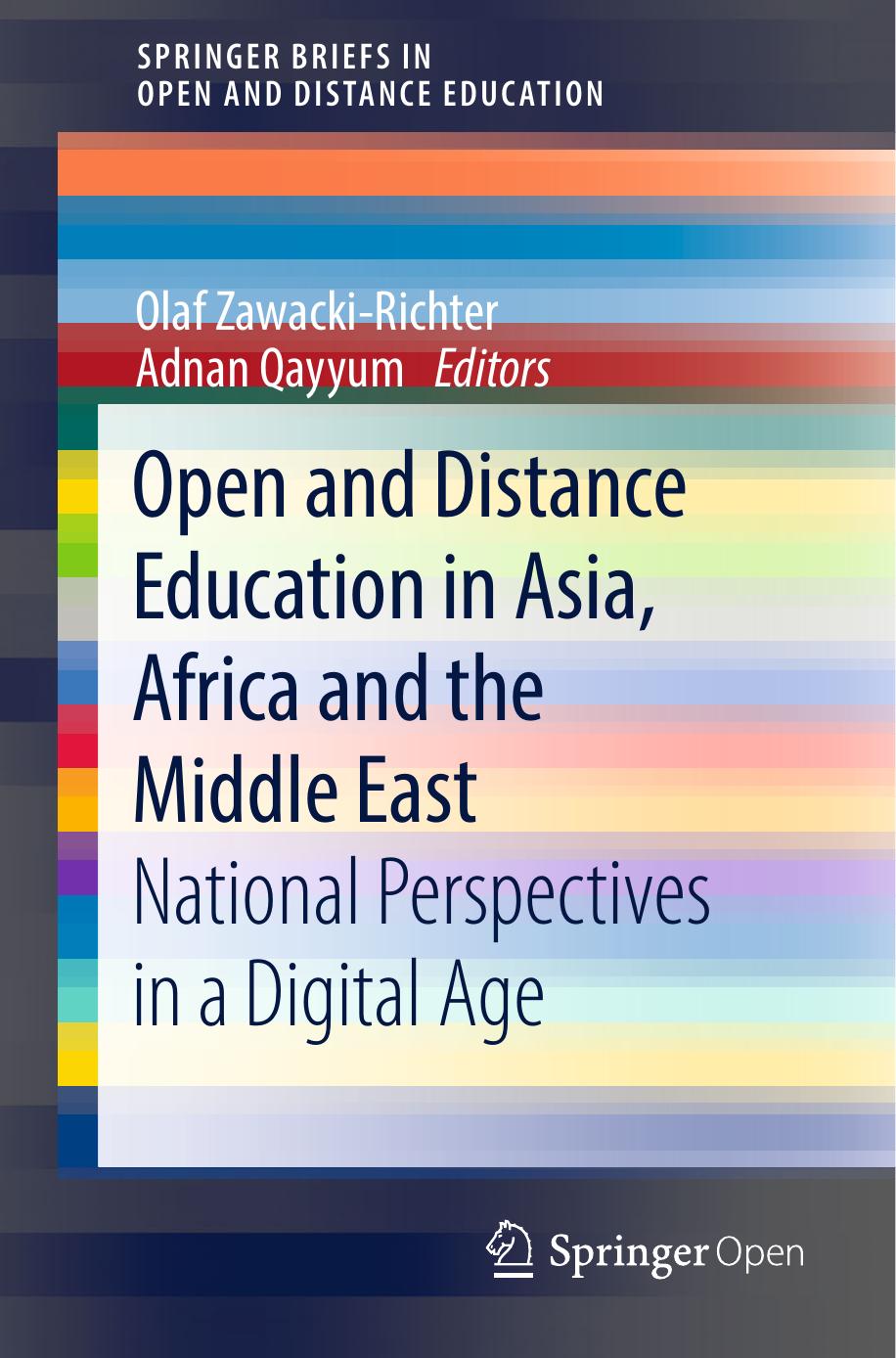Open and Distance Education in Asia, Africa and the Middle East by Olaf Zawacki-Richter & Adnan Qayyum

Author:Olaf Zawacki-Richter & Adnan Qayyum
Language: eng
Format: epub, pdf
ISBN: 9789811357879
Publisher: Springer Singapore
The Policy does not exclude online delivery, but opens up the space to include a range of possibilities for the use of an “appropriate combination of different media” (DHET, 2014b, p. 11). The Preamble makes it clear that the Policy is committed not only to the “appropriate integration of ICT to enhance distance education provision in both public and private universities as well as other post-schooling institutions” but also commits the government to “ensure that every post schooling student has reasonable access to affordable connectivity” (p. 7).
Addressing the increasing convergence of, or blurring of, the boundaries between different forms of delivery and increasing access to ICT, the Policy illustrates different options of technology-enabled learning as follows (Fig. 8.1).
Figure 8.1 illustrates three of the many possibilities envisioned by the Policy (DHET, 2014b, p. 9). Position ‘A’ presents distance education that is digitally supported, while position ‘B’ presents a distance education scenario that is fully online. Position ‘E’ represents the possibility of a campus-based offering that is Internet-dependent with fully online elements.
In terms of the future development of these different options, the Policy (DHET, 2014b) foresees that the two main descriptions of delivery namely ‘campus-based’ and ‘distance’ will be a reality in the South African context for the “foreseeable future” (p. 9). In order to provide some more specific guidance with regard to the classification of the different nuances or possibilities as envisioned in Fig. 8.1, the Policy (DHET, 2014b) states that the notion of ‘distance education’ will specifically refer to a form of educational provision where “students spend 30% or less of the stated Notional Learning hours in undergraduate courses …, and 25% or less in courses” at honours and postgraduate courses that are “staff-led, campus-based structured learning activities” (p. 9).
The unique contribution and purpose of distance education as clarified above is therefore foreseen toWiden flexible access and meaningful, successful participation in post-school education.
Download
Open and Distance Education in Asia, Africa and the Middle East by Olaf Zawacki-Richter & Adnan Qayyum.pdf
This site does not store any files on its server. We only index and link to content provided by other sites. Please contact the content providers to delete copyright contents if any and email us, we'll remove relevant links or contents immediately.
Navigation and Map Reading by K Andrew(5113)
Spare by Prince Harry The Duke of Sussex(5078)
Tuesdays with Morrie by Mitch Albom(4696)
Cracking the GRE Premium Edition with 6 Practice Tests, 2015 (Graduate School Test Preparation) by Princeton Review(4227)
Machine Learning at Scale with H2O by Gregory Keys | David Whiting(4200)
Never by Ken Follett(3801)
Goodbye Paradise(3730)
What It Really Takes to Get Into Ivy League and Other Highly Selective Colleges by Hughes Chuck(3697)
Harry Potter and the Prisoner of Azkaban (Book 3) by J. K. Rowling(3304)
Fairy Tale by Stephen King(3229)
Pledged by Alexandra Robbins(3138)
Kick Ass in College: Highest Rated "How to Study in College" Book | 77 Ninja Study Skills Tips and Career Strategies | Motivational for College Students: A Guerrilla Guide to College Success by Fox Gunnar(3077)
A Dictionary of Sociology by Unknown(3032)
Sapiens and Homo Deus by Yuval Noah Harari(2990)
Reminders of Him: A Novel by Colleen Hoover(2952)
The Social Psychology of Inequality by Unknown(2943)
Graduate Admissions Essays, Fourth Edition: Write Your Way into the Graduate School of Your Choice (Graduate Admissions Essays: Write Your Way Into the) by Asher Donald(2878)
Will by Will Smith(2797)
Zero to Make by David Lang(2727)
